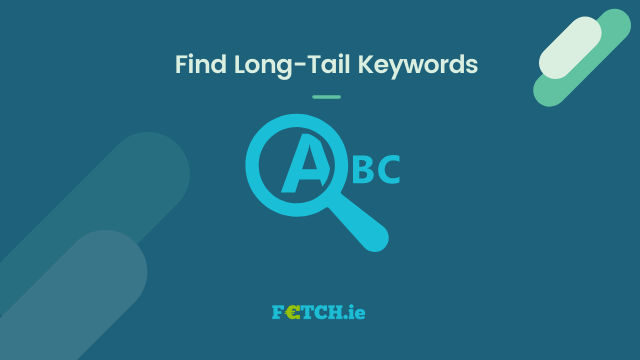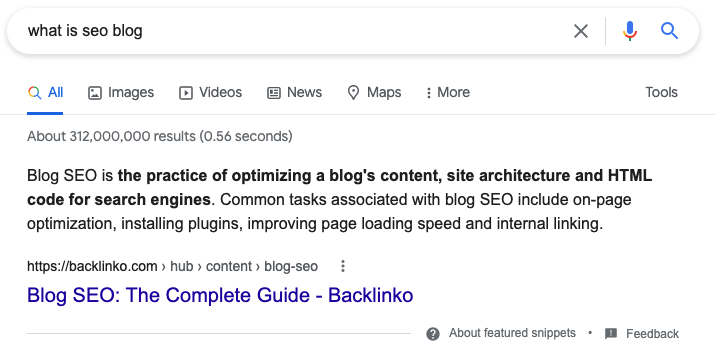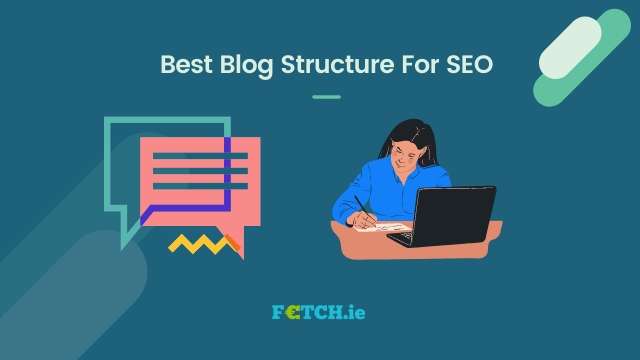If you have created content for a blog in the past, you’ll know how long it can take. You have to gather research, write the post and then publish the post. It can take hours overall to create a blog post.
It can be frustrating when your post doesn’t get the traffic you’ve been looking for. There is a way to try and up your traffic to your posts. Your solution is SEO. All marketers and businesses want to rank highly on Google, and to achieve this, you need to be writing great content, and SEO can help you get there.
If you’re new to SEO, you may be unsure how to optimise it on your blog. Well, this article gives you the best blog structure for SEO.
1. Find long-tail keywords

Keywords are essential for SEO ranking and help improve the blog structure for SEO. Incorporating keywords into your blog posts can help search engines like Google identify your blog post’s context.
Google identifies these keywords you have incorporated and helps your blog post appear in searches under search terms related to those keywords.
Let’s set you up with an example to give you a good idea of how it all works. We want to make a blog post about the best earphones to buy online. Including the term “best earphones to buy online” throughout your post multiple times can help Google index your site for the correct search results.
To find keywords for your blog post, you should conduct keyword research. If your business has a Semrush account, you can do all this there. Identify one main keyword that you want to be your focus for the blog.
As well as that, you should have two or three keywords that are related to your main keyword. Include those in your blog post too.
So our focus on keywords should be for long-tail keywords. A long-tail keyword tells you more about what the user is searching for, such as “best earphones to buy online” rather than just “earphones”. It is difficult to identify the user’s intent on shorter keywords.
After choosing your long-tail keyword, you’ll need to incorporate it into many parts of your page. You should include it in:
- Title Tags
- Meta Description
- URL
- Alt Image Text
- Body Text
By incorporating long-tail keywords in this process, you have the best blog structure for SEO.
2. Create a Structure for Your Post

When writing an SEO optimised blog post, your post should have a clear structure. We recommend that every post should have:
- An introduction (introduce the topic you’re going to talk about)
- A body (the main content)
- A conclusion (summarise your ideas)
Including the above will make for an excellent blog structure for SEO.
3. Include SEO Friendly Elements

When posting new content and updating old content, you should integrate the following SEO elements into your content. We found that using the following elements helped SEO on our blog posts:
- Headings to break up paragraphs
- Bullet lists (like this)
- Short paragraphs (2-3 sentences)
- Image alt text
We found that using these SEO friendly elements helped our content rank higher in search results.
Using these elements allows Google to understand our content more and its intent. Using these elements makes it the perfect blog structure for SEO.
4. Optimise Blog for Featured Snippets
Using the elements above can help with your chances of getting a featured snippet. A featured snippet is what Google displays at the very top of the search results. It gives users a quick answer to their questions.

In your blog post, you should answer questions that people ask on the topic. It can then help you rank under those questions.
5. Linking Structure

Links are a vital pillar of SEO. There are backlinks and internal links. Backlinks are when another website links to your content on their pages. Google values these as they see the link as a vote in your favour.
Internal links are when you link off to another page from the page you’re on. For example, if you are writing a blog post on bands coming to a festival, you might link to a blog post where you speak about one of the bands.
It is good to include internal linking as it helps your blog structure for SEO. It also helps users read more relevant material on your blog.
6. Place the Most Important Information Above the Fold

An important aspect to note is to place your most crucial information above the fold to improve your blog structure for SEO.
What does above the fold mean? Above the fold is what users see when the blog post first loads. You typically have to scroll down the page to go below the fold.
The information above the fold usually includes:
- Site’s name
- Nav Bar
- Blog Title
- Blog Image
In Summary
Having a strong blog structure for SEO will help your blog website perfrom well in the search rankings. Once you make these changes, don’t expect to see a jump in traffic because it won’t happen overnight.
SEO takes time. The quality of your content should also be very high. Other factors will influence how your posts do online such as backlinks, authority score and the speed of your website.
